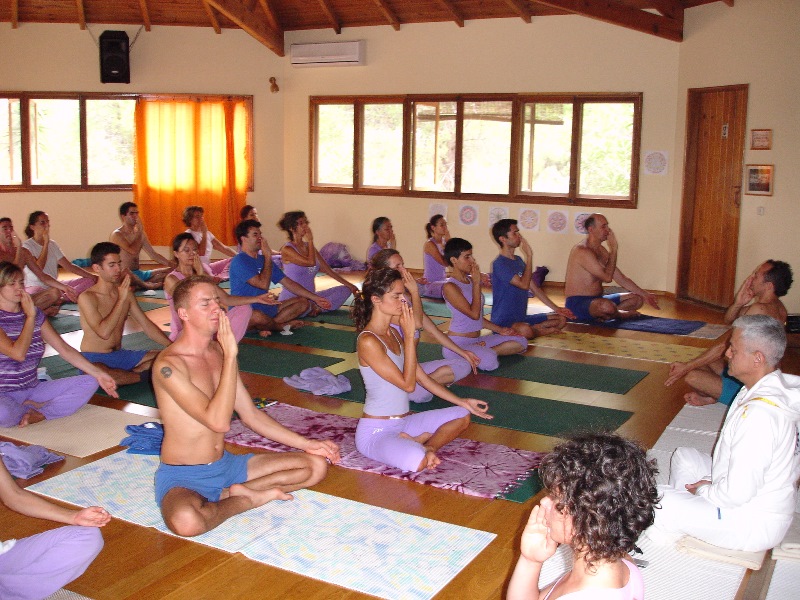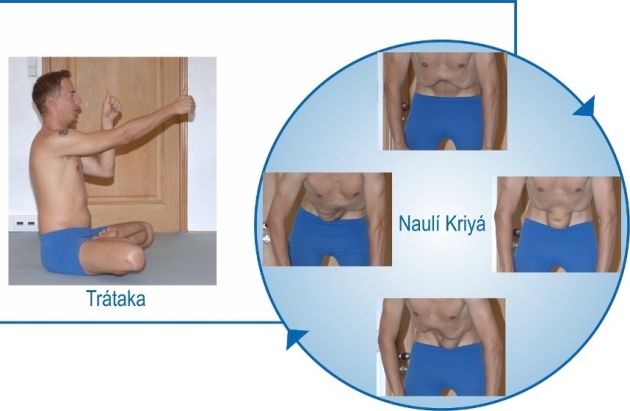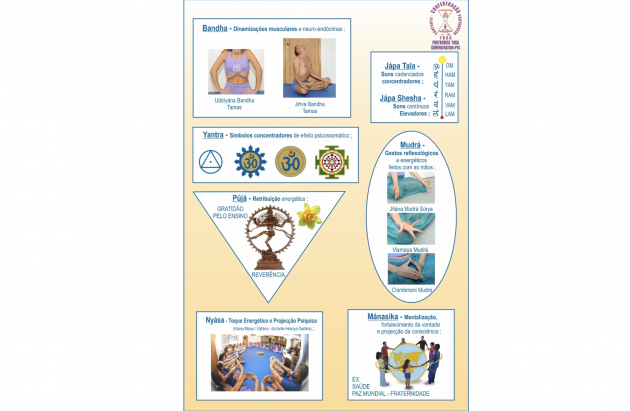Pránáyáma - Energetic and Neuro-vegetative influence through Respiratory Exercices

At YOGA, one explores the total capacity of the lungs to breath, namely the lower area of the lungs, the bigger one. The diaphragm is also used consciously, in a natural process. Breathing is done through the nose and almost seven liters of air (males) per inspiration are absorbed by the body thus bringing a high amount of O2 into the organism.
In the West, one breaths with the superior part of the lungs whereas the inferior part, the biggest part, is overlooked. The mouth is often used to breathe and the general amount of air used is in the order of 0,5lts to 2lts, maximum 3.
The word Prana refers to the unique kinetic energy from where all energies in the Universe derive (for example, the energy of the lightning). The Prana used in the Human Beings are the oxygen’s negative ions (anions) – bio energy.
The four phases of breathe in Yoga (Puraka – inhaling; Kumbhaka – retention with the lungs filled; Rechaka – exhaling; Súnhyaka – retention with the lungs empty) greatly improve the oxygen intake in each breathe and optimize the performance of each breathe cycle.
The conscientious use of the diaphragm uses the area of the lungs with greater capacity, the lower part, into which the air flows in first and from where it flows out last. It also reinforces the hearth’s function in the circulatory function (venous phase), aiding it and relaxing it.
PRÁNÁYAMA seeks to:
1. To became conscious of our part in all the respiratory function, the appropriation and control of the Energy.
2. The creation of mental and emotional states of consciousness (and bio energetic states also).
3. Control and alteration of organic functions.
4. To attain states of super consciousness.




.jpeg)


